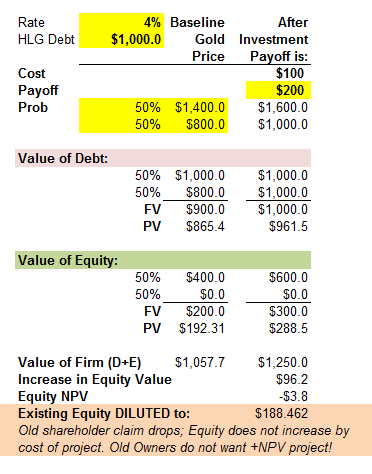Hello David,
In your Excel sheet relative to Stulz 3.1.1 Bankruptcy costs, I noticed that you compute a normal deviate.
The formula you use is : (Forward Price - Debt Face Value) / (sigma * Forward Price) = -1,43.
I was wondering : what is the concept behind the formula ? Do you have any reference text for this ?
Usually, to standardize a variable, we use the following formula Z = (X - u) / sigma (cf. http://ci.columbia.edu/ci/premba_test/c0331/s6/s6_4.html )
The difference is the "Forward Price" used in the denominator...
Also, a minor comment: I would rather use the spot price as the "random variable" to be "standardized"... Since the company has either the choice to hedge (using Forward Price) or to stay un-hedged/exposed to the spot price. But anyway, it does not change the idea of the computation...
Thanks for your feedback.
Regards,
trabala38
In your Excel sheet relative to Stulz 3.1.1 Bankruptcy costs, I noticed that you compute a normal deviate.
The formula you use is : (Forward Price - Debt Face Value) / (sigma * Forward Price) = -1,43.
I was wondering : what is the concept behind the formula ? Do you have any reference text for this ?
Usually, to standardize a variable, we use the following formula Z = (X - u) / sigma (cf. http://ci.columbia.edu/ci/premba_test/c0331/s6/s6_4.html )
The difference is the "Forward Price" used in the denominator...
Also, a minor comment: I would rather use the spot price as the "random variable" to be "standardized"... Since the company has either the choice to hedge (using Forward Price) or to stay un-hedged/exposed to the spot price. But anyway, it does not change the idea of the computation...
Thanks for your feedback.
Regards,
trabala38

 .
.